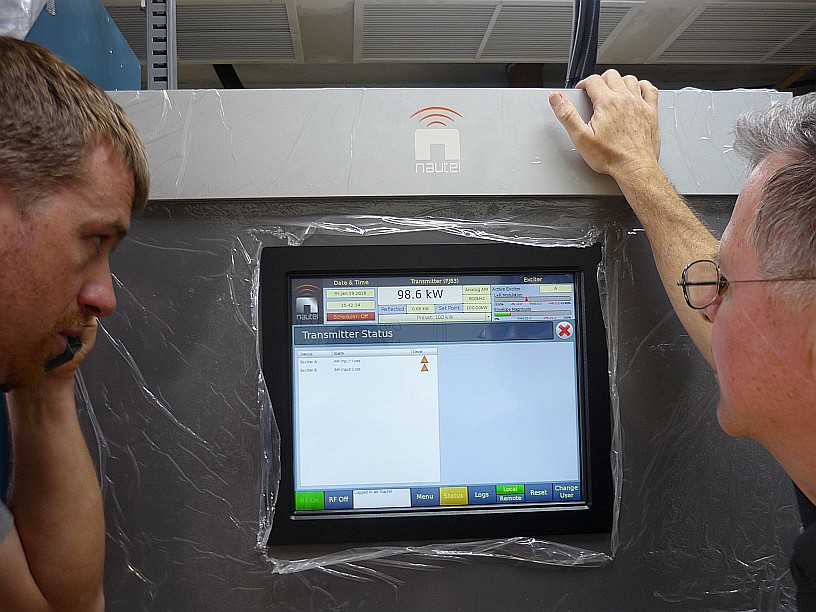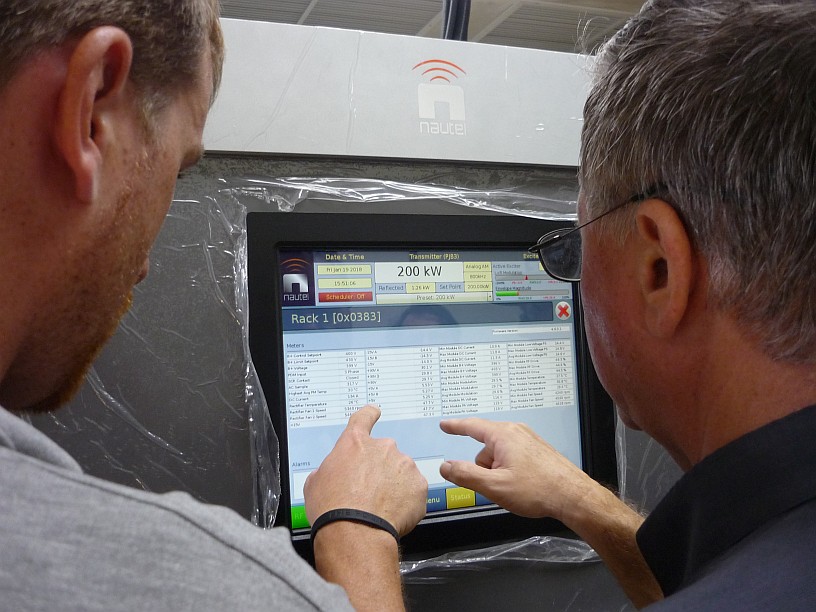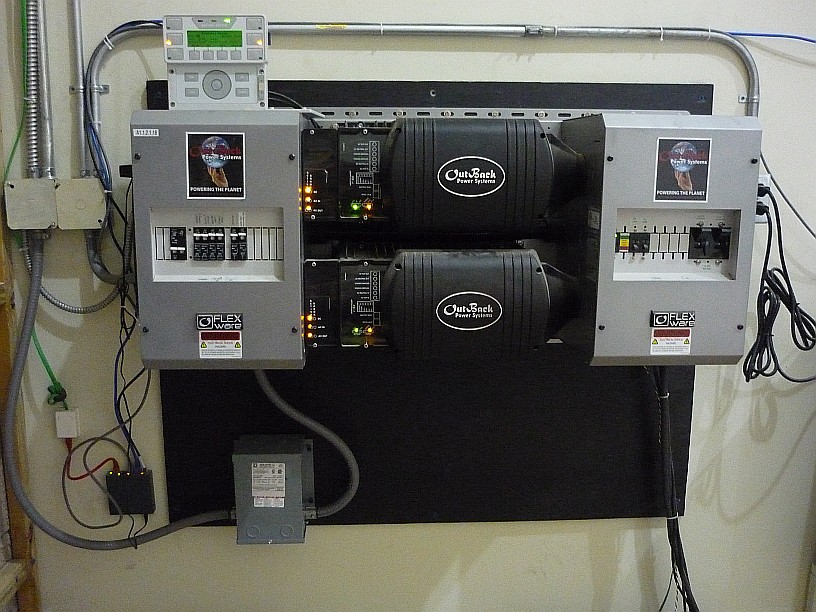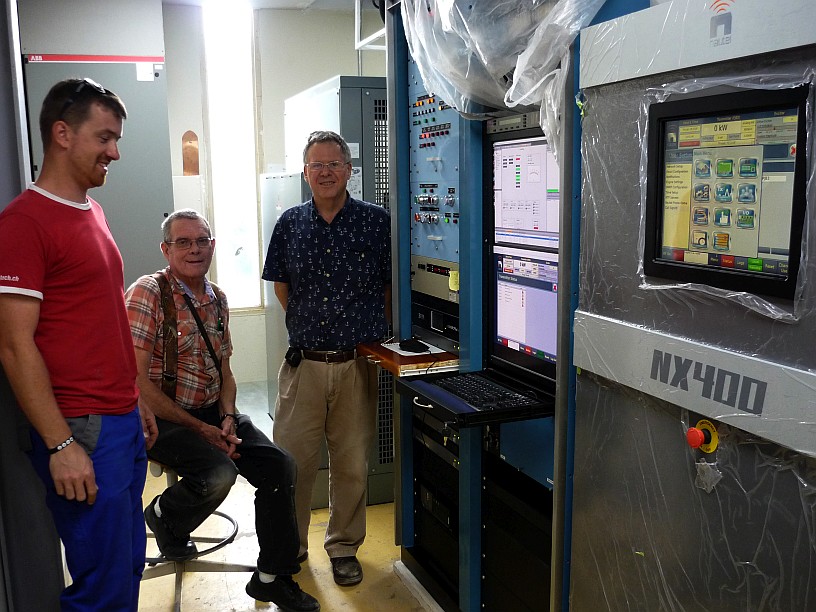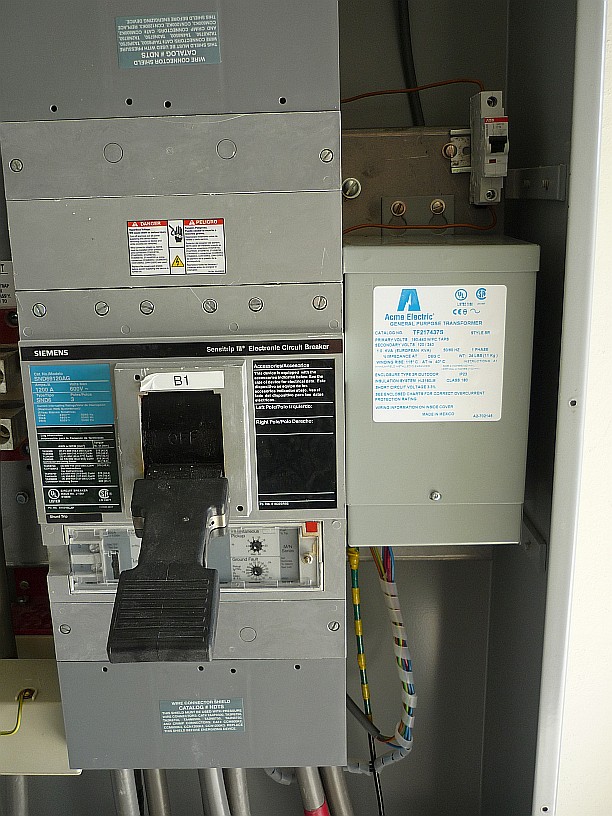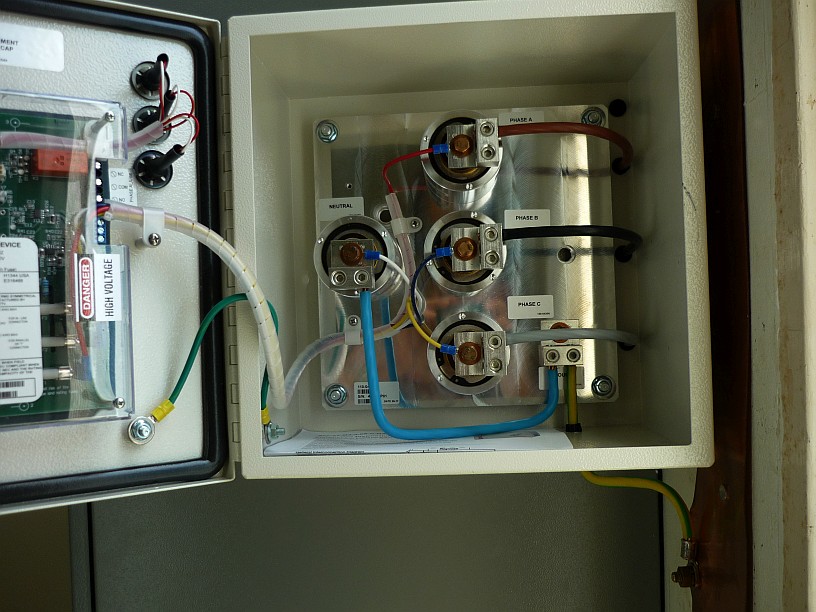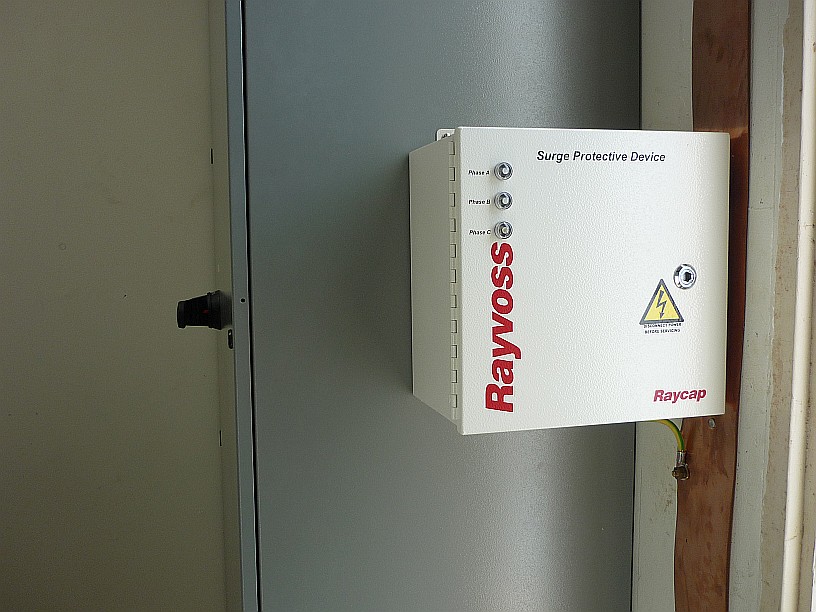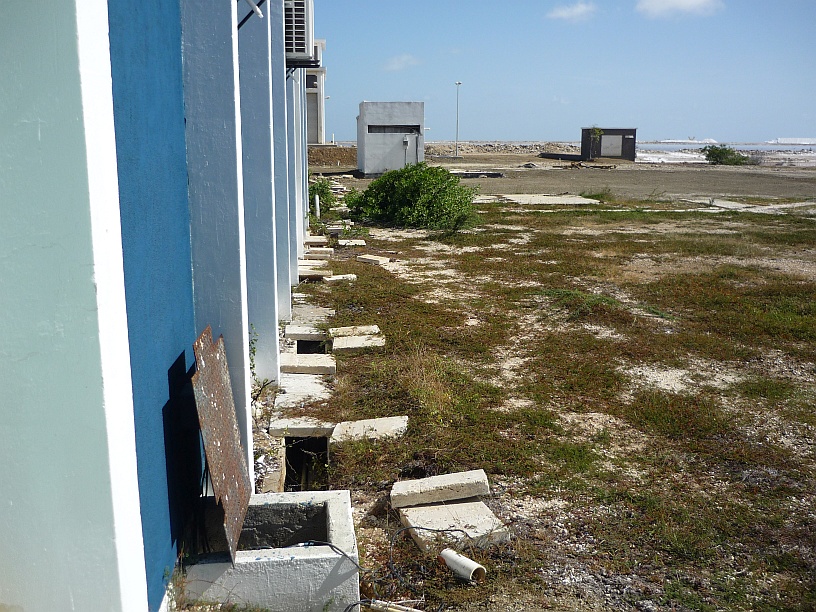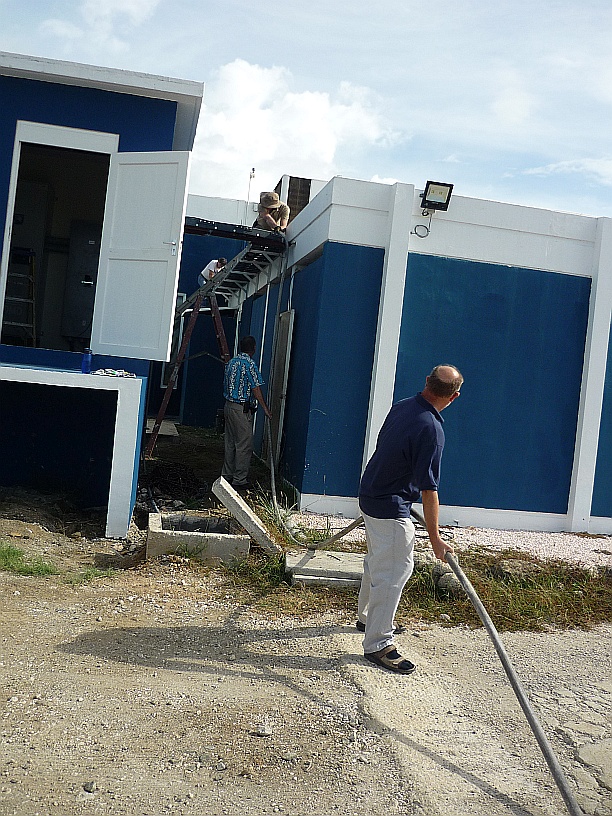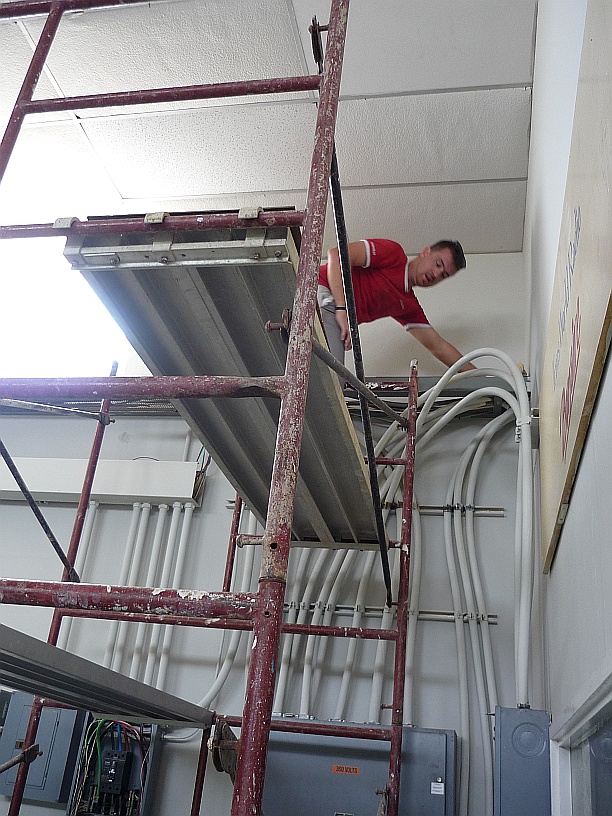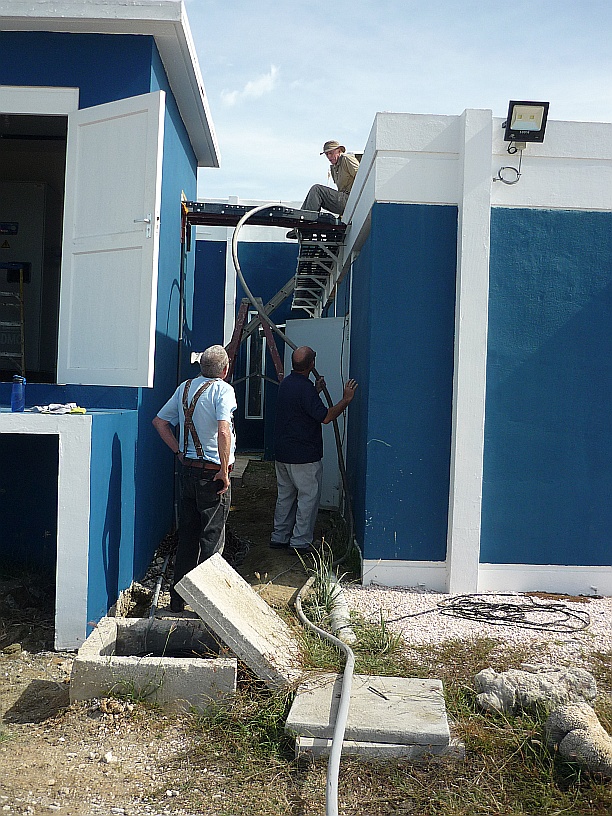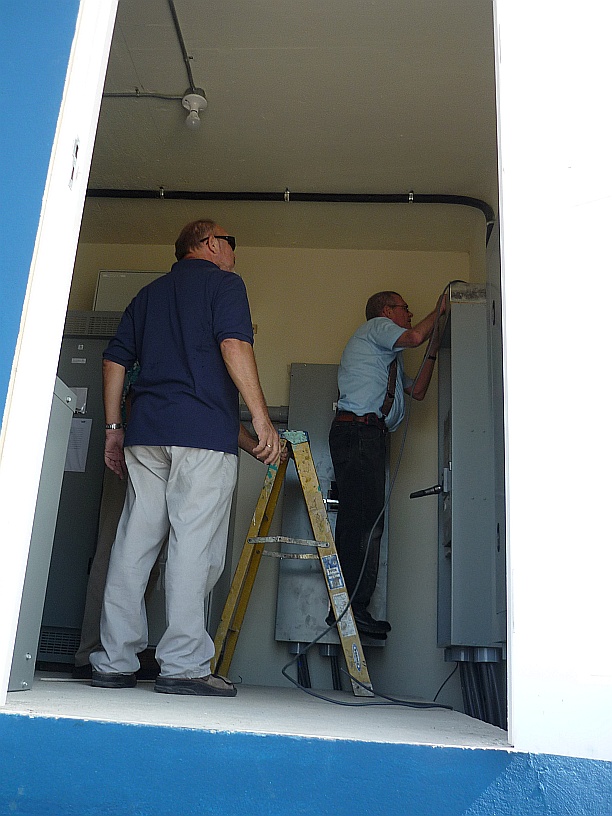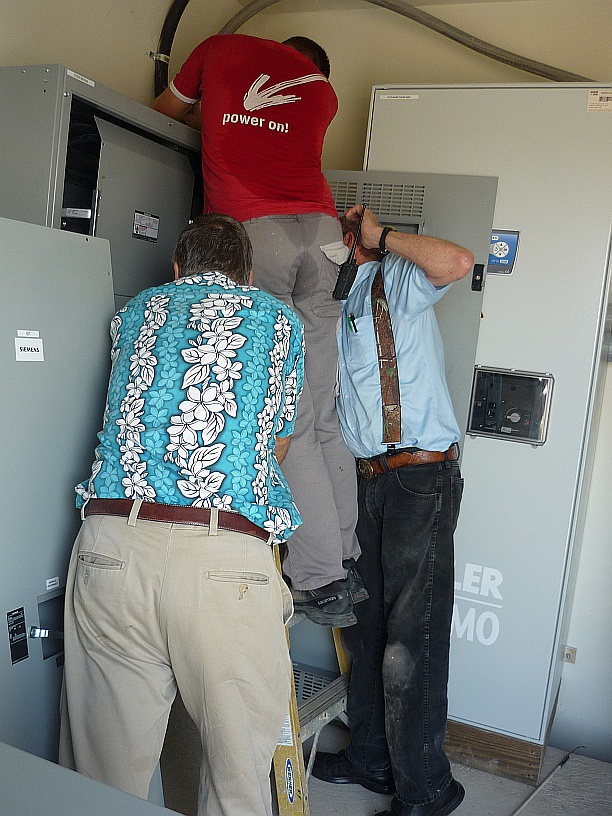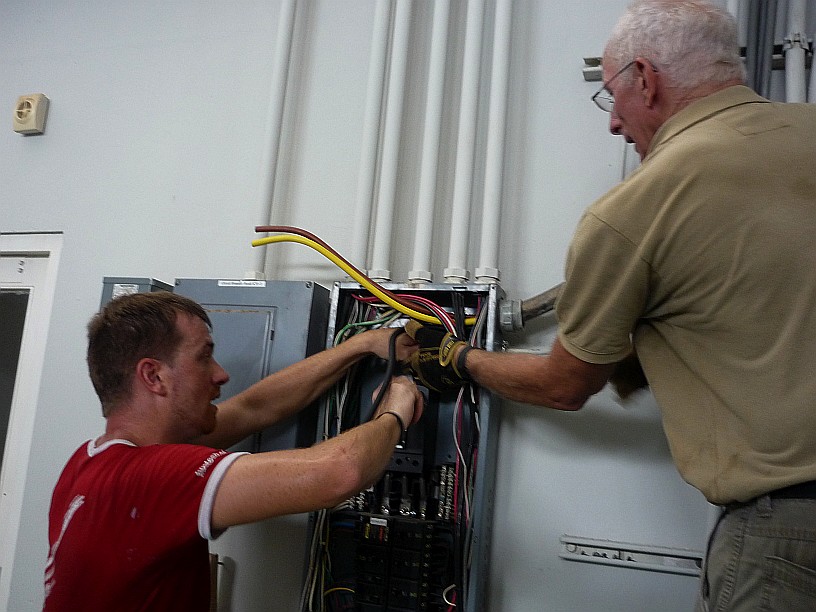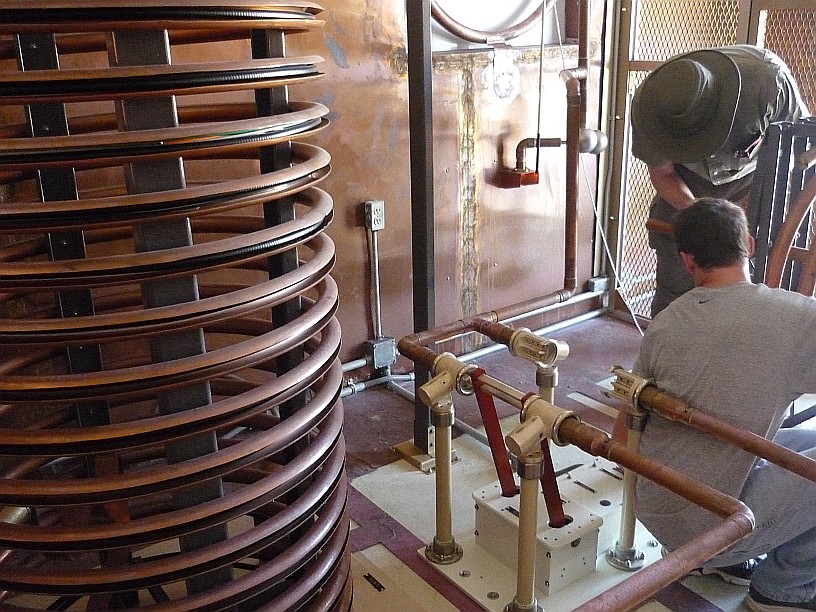My first project was to install circuit breaker protection on the primary of emergency buttons’ step-down transformer mentioned in an earlier blog. We also discussed having a small light at the emergency button to indicate that the circuit is active.
Meanwhile, Daryl, Jonas and others were bringing up the dummy load to begin further testing of the new transmitter. Unfortunately, its 50-amp circuit breaker kept tripping. It was discovered that while the four fan motors only draw 26 total amps when running, the inrush of current for starting all four motors at once is close to 150 amps. As a ‘temporary’ solution the 50-amp breaker was replaced with a 100-amp breaker and the cooling fans for the dummy load came on without tripping the 100-amp breaker.
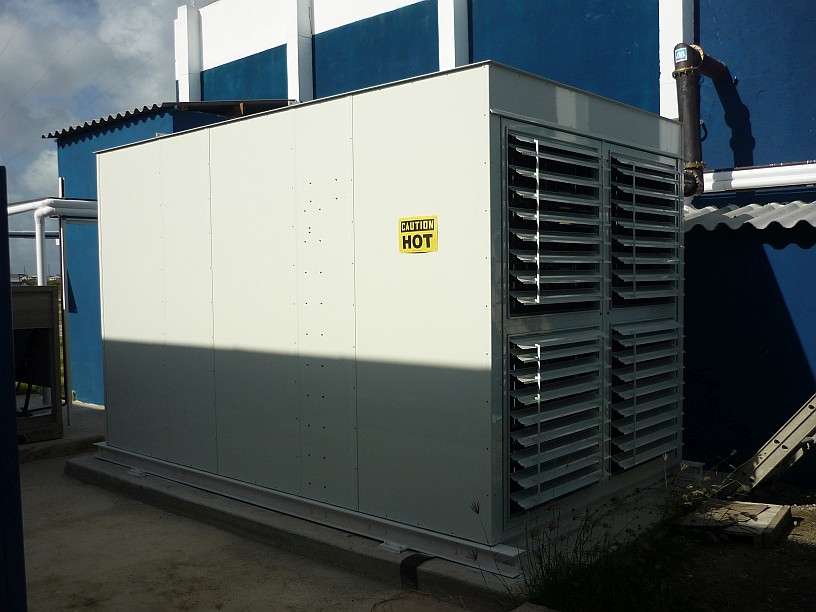
The dummy load working, as evidenced by the louvers which are opened by the high air flow. This Kintronic Labs load can dissipate over 600,000 watts of power.
I began to research possible solutions to this breaker tripping and emailed Ralph VanDerWerf for his advice. After several proposals were bantered back and forth, it was eventually determined that the electrical code would allow the use of the 100-amp breaker for these starting motors under such circumstances.
Tom and Joshua used my assistance to do some more antenna adjustments at the towers. Upon instruction via the two-way radios, I would switch on, or off, the transmitter (at the reduced power level of 5,000 watts) to allow them to safely make measurements with their operating impedance bridges.
This afternoon we began the process of testing the new transmitter’s ability to produce power for broadcasting. To do this we used the dummy, or test, load. While in phone contact with Nautel this process was begun.
The transmitter power easily continued to increase until 270 kw when it recycled due to a ‘Fast SWR Shutback’. Since we were on the dummy load, we suspected possible arcing there. Upon close examination, I discovered something that looked like a piece of paper wrapped around a resistor support inside the dummy load. After opening a side panel of the dummy load a strip of foil covered plastic was removed. We were sure this would take care of the problem, but after powering back up, the transmitter again tripped at the same 270 kw power level!
By now Tom and Joshua were finished with antenna adjustments for the day, do it was decided to power up into the antenna instead. Same problem at 270 kw on all three antenna patterns! This seemed to indicate that the problem was in the antenna/dummy load switch box, or the coax from the transmitter to this box–the only things used in common for carrying power to the dummy load, or to the antenna system. Tom thoroughly checked the witch and filed off a couple of sharp corners. The problem remained. Next the coax line was removed from above the transmitter, thoroughly cleaned and checked, then reinstalled. Still the same problem at exactly 270 kw every time.
It was getting late! The old transmitter was switched on for the evening broadcasts and we held a short prayer meeting for wisdom. We would appreciate your prayers regarding this challenge!!
As we arrived home around 7pm, Virginia took a dish of chicken and rice to Tom and Joshua for their evening meal. Our supper was some of the same, with salad.
After supper, I continued trying to catch up on overdue blog entries. Late to bed again!!

